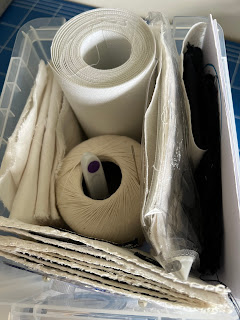School's out for summer & I am enjoying catching up with friends, family & things I enjoy doing. I have had time to neaten up the garden & add some additional colour. The sweet peas with the lovely colour & scent have been particularly good because of all our rain this summer. These were grown from seed & the white ones are everlasting.
There is a well known decorating theory about the unexpected pop of RED in a room where it doesn't match, it improves the scheme.
I read about this in January in the Garden & Home & was interested because it is not a colour I use too often in my home (though I did have a red wall at one time).
It explained it as this:
As creator Taylor Simon of @intayriors, a Brooklyn-based interior designer known for her eclectic style, explains, the unexpected red theory is basically adding anything that's red, big or small, to a room where it seemingly doesn't match. It's like a color pop but less contrived.
According to Taylor, once that red piece has been added to your room, it automatically looks better. It can be as simple as a red lamp or soft furnishing, scarlet a painted window trim or doorframe, or a completely random brick red cupboard that stands boldly in your otherwise neutral kitchen. I don't know about you, but I'm pretty sold.
It does not matter about the shape or the size of the red element, it is the unexpected element that brings surprise, fun, drama to a neutral scheme.
While out picking up some plants today at a local nursery, I was struck by the crocosmia Lucifer with its tall arched stems & vivid red flowers. They are like a punctuation mark - you cannot ignore them.
Alongside them in the display was some more delicate Mrs. Bradshaw Geum - a deep red poppy type flower whose shape contrasted well with the Lucifer.
I only have some bright red salvia's (hot lips) in the garden & they certainly are a pop of colour. I potted up the two new reds together at the bottom of the garden. The pot is against the cream shed & next to white Japanese anemone's & a purple clematis.
When viewed from the house, the reds are very dramatic so I am pleased I went with such a bold pop of colour amidst the mainly pinks / purples / greens / creams of the garden.
Have you experimented with an unexpected red? Tell all ...
Thank you for stopping by, subscribing please, & sharing this,
Dee 🪴🏡👩🌾




































